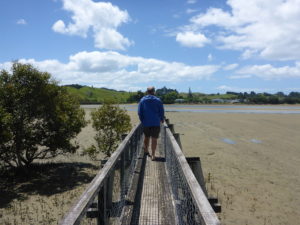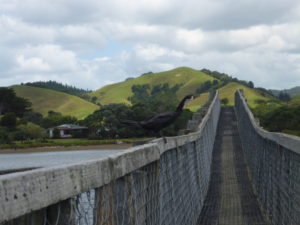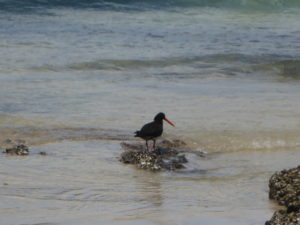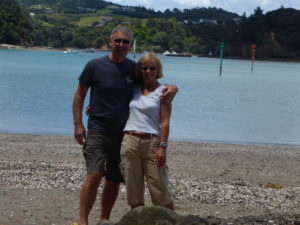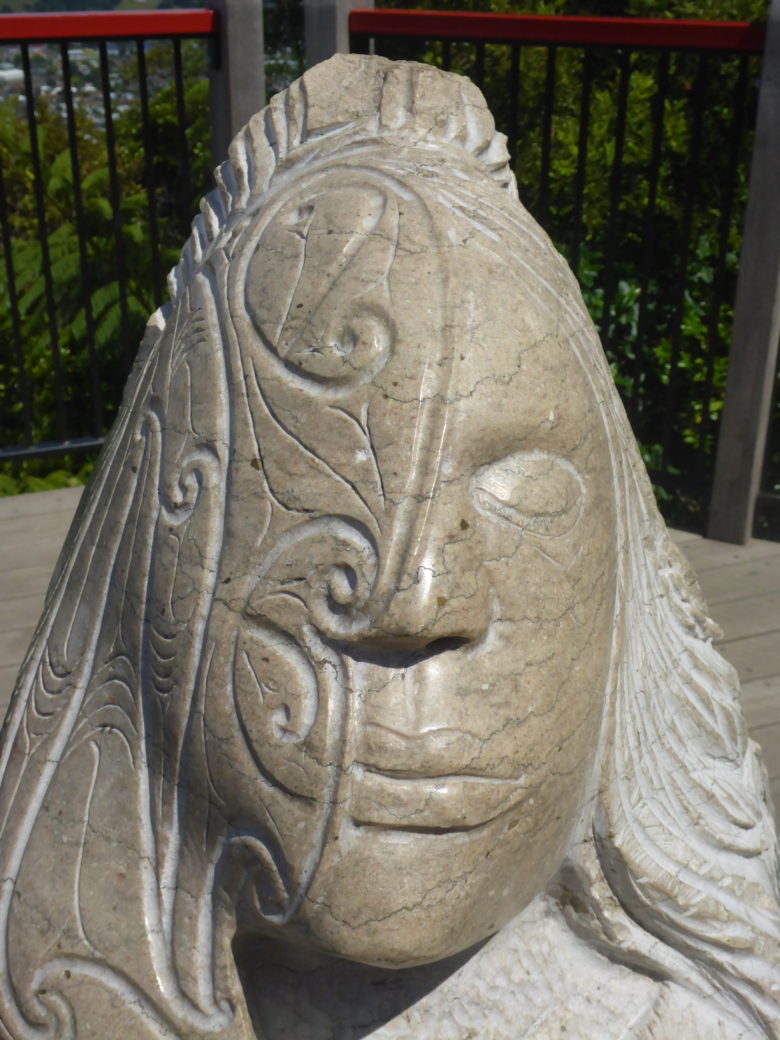Written on paper in Zoonie’s list were over one hundred jobs to do and most of the main ones began with W. Three of the four Window hinges on the two big windows at the front of the deckhouse had corroded through so the windows were held in place by their closures when shut but were a little wobbly when open.
Terry from the local aluminium workshop was very reluctant to commit to the job. But when Rob suggested that if he wasn’t interested we would go elsewhere Terry volunteered to come and have a look after work. It was then we learned the hinges are not aluminium but a much tougher mix of metals so he immediately recognised the job as being highly do-able.
The job took around two hours and restored that aspect of Zoonie’s integrity more easily than we could have hoped for.
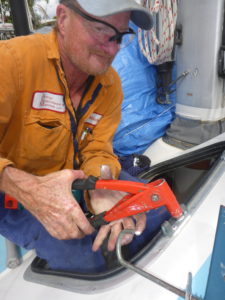
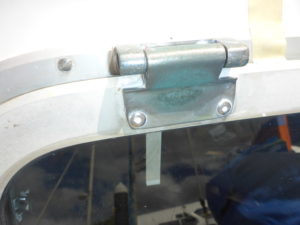
Naylene gave us a hand drawn map to reach her section for the arranged barbecue and I must say we envied her just a little when we saw the place and views and met the neighbours. They have erected a large garden shed so far and the house is yet to come. I would have been happy to live in the garden shed. Just kidding, but it was tempting! Our friends in the photos are Kyle and Shelley from Blowing Bubbles and Naylene is in the green top.

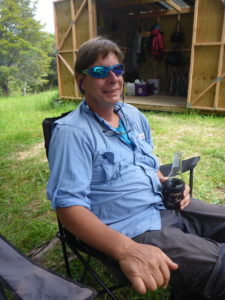
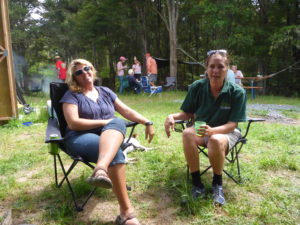
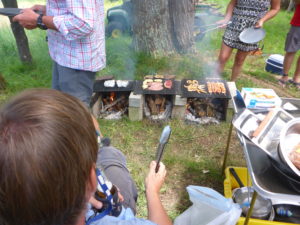
![]()
Amiable Scott came and re-wired the Windlass and Rob gave it a loving service which included the aesthetics of a fresh coat of paint and lots of red grease.
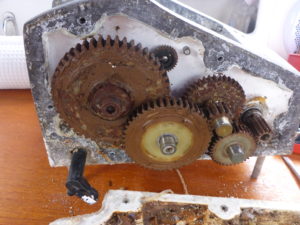
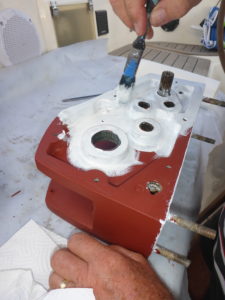
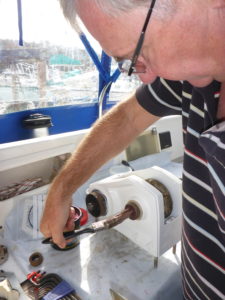
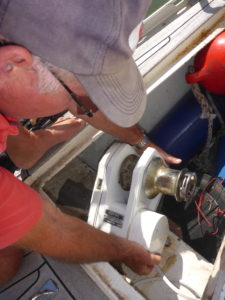
Interspersed with our work efforts we enjoyed the company of Gail and Tony on some more spectacular walks. In quarry gardens for one our blossoming friendship met the varied and colourful spring blossoming of the flora and we never tired of climbing to the Parihaka Lookout.
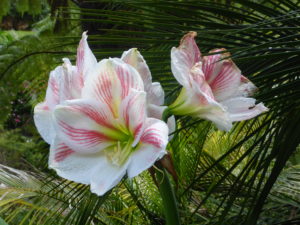
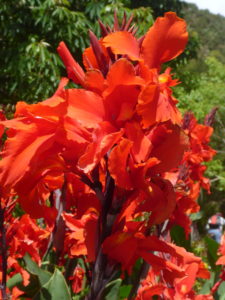
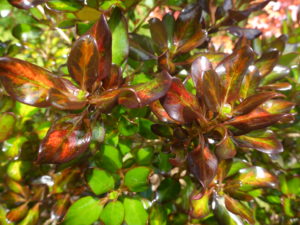
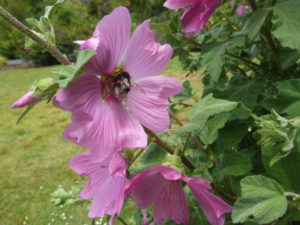
Once a Maori stronghold, the bleached bones from the last tribal battle lay in clear view when the first pakeha settlers came to build their homes. Today the tabu (sacred) hill is preserved for the wildlife and the enjoyment of all people and the kumara storage pits, terraces and pa are still just visible underneath the encroaching undergrowth. Sea shell filled middens allude to the routine journeys made by bare-footed villagers up and down the steep hillsides to the bountiful river below.
Trundling up Dundas Road from the marina, which is the nearest point of entry to the reserve, we walk past the Distinction Hotel and numerous appealing homes and then some Maori sections where plots of Taro and Kava are being grown and into the native woodland track. Having cleaned our shoes to do our bit to prevent Kauri die back disease, supposedly started when the bacteria is introduced into the root system from our dirty shoes, the walk begins.
The track zig zags upwards and around a hillside alongside a steep sided valley with a remarkably healthy little stream bubbling along it and cascading in miniature over vertical rock cliffs. Suddenly all the sounds of man and town are left behind and just the birdsong of tui, pigeons and fantail surround us.
A little further up there are lots of giant native trees of which kauri with their wide, tall and straight trunks, remu and tawa are just three. We were often alone amongst the giants. Near the summit the views downriver opened up towards Whangarei Heads and over the wide expanse of river.
Beneath the wood planked lookout are more storage pits and terraces and behind to the north are the sites of sheltered villages. A beautiful carved limestone bust of a weeping warrior, half Maori abstract patterned face, mourns the loss of their heritage and noble past.
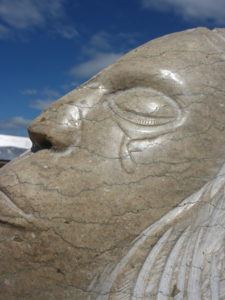
The views are grand on a clear day. The Pacific far away to the east on the left hand side around over the expansive light industrial area and the Town Basin towards the residential areas of Kensington and Kamo and on northwards towards Cape Reinga where Maori legend has it their spirits return home to Hawaiki.

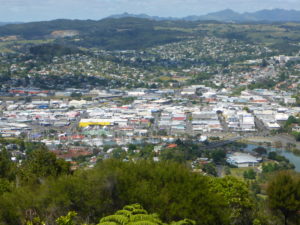
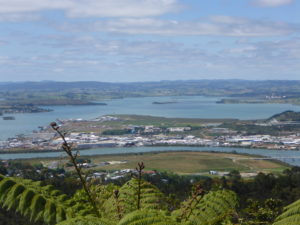
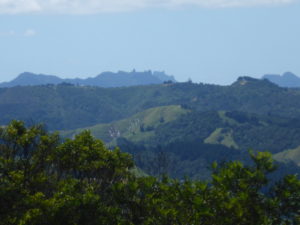
In the interests of our next jobs and while a little package was on its way to us from Beijing containing a hot knife, we examined five second hand sewing machines in Stanley Marines wonderful emporium of nautical paraphernalia. I had left my 1895 Singer Sewing Machine at home not wanting to expose its metal parts to a salty environment and missed its usefulness from day 1. We bought a Pfaff 6 hand operated machine so we would have no problems with its energy source, that would come from me.
YouTube came up with an excellent video to give us ideas and after Charly and Tom’s visit we wrestled our way through the task coming up with an impressive final result made from scraps from Phil at UK Sails and costing one seventh the quote we had from a local firm for providing them. Details later.
Jovial and generous Phil fitted a new sprayhood Window with an opening central section for a draft in hot airs to replace the yellowing originals that were rapidly clouding up completely.
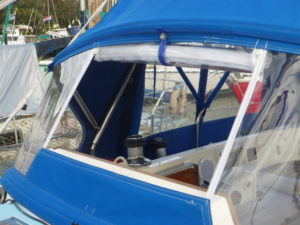
By way of celebration with that ‘W’ job done we went for the first of many walks on the nearby Taranaki coast north of Whangarei. The Whananaki Estuary is crossed over a by way of a long bridge, a favourite resting spot for passing estuary birds and part of the Long Pathway that runs from Cape Reinga at the northern tip of the North Island to Bluff, near Invercargill at the southern tip of the South Island. We did just a little stretch.
